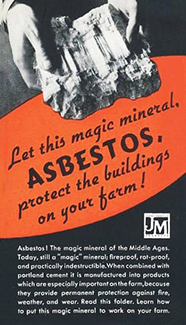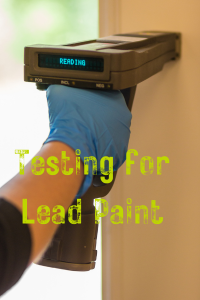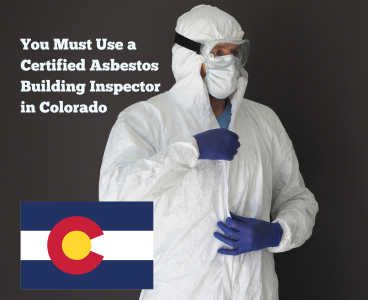 However, owning or managing pre-1978 rental properties comes with significant responsibilities that property owners must carefully navigate. These older buildings frequently contain hazardous materials that were commonly used in construction before their health risks were fully understood. Lead-based paint, once prized for its durability, can create serious health hazards if it deteriorates or is disturbed during renovations. Similarly, asbestos, which was widely used for its fire-resistant properties and insulation capabilities, can pose significant risks if materials containing it are damaged or disturbed during maintenance or remodeling work.
These materials require special attention because their health impacts can be severe. Lead exposure can cause developmental delays in children and various health problems in adults, while asbestos fibers can lead to serious respiratory conditions and cancers that may not become apparent until years after exposure. Understanding and properly managing these risks is not just a matter of regulatory compliance – it's essential for protecting tenant health and maintaining the long-term value of these otherwise desirable properties.
However, owning or managing pre-1978 rental properties comes with significant responsibilities that property owners must carefully navigate. These older buildings frequently contain hazardous materials that were commonly used in construction before their health risks were fully understood. Lead-based paint, once prized for its durability, can create serious health hazards if it deteriorates or is disturbed during renovations. Similarly, asbestos, which was widely used for its fire-resistant properties and insulation capabilities, can pose significant risks if materials containing it are damaged or disturbed during maintenance or remodeling work.
These materials require special attention because their health impacts can be severe. Lead exposure can cause developmental delays in children and various health problems in adults, while asbestos fibers can lead to serious respiratory conditions and cancers that may not become apparent until years after exposure. Understanding and properly managing these risks is not just a matter of regulatory compliance – it's essential for protecting tenant health and maintaining the long-term value of these otherwise desirable properties.
Initial Assessment
Whether you're acquiring an older rental property or are an existing owner seeking to better understand your property's condition, a comprehensive hazard assessment provides crucial information for property management. For new buyers, this process should begin before finalizing the purchase, while current owners might consider assessment during renovation planning or as part of an updated management strategy. The first step is reviewing any existing documentation about the building's history, including previous inspection reports, renovation records, and known hazard disclosures.Testing For Lead
 For lead assessment in Colorado, property owners must work with EPA-certified lead inspectors who can conduct both visual assessments and XRF (X-ray fluorescence) testing to identify lead-based paint. Colorado Regulation 19 states that lead-based paint means paint containing more than 0.5% lead by dry weight or 1.0 mg/cm².
The inspection should include detailed sampling of all painted surfaces, with particular attention to high-friction areas like windows and doors. This testing typically takes 1-2 days for a medium-sized property and costs between $800-$1,500, depending on the property's size and complexity. For existing owners, this assessment can be particularly valuable if you're planning renovations or have noticed deteriorating paint conditions.
For lead assessment in Colorado, property owners must work with EPA-certified lead inspectors who can conduct both visual assessments and XRF (X-ray fluorescence) testing to identify lead-based paint. Colorado Regulation 19 states that lead-based paint means paint containing more than 0.5% lead by dry weight or 1.0 mg/cm².
The inspection should include detailed sampling of all painted surfaces, with particular attention to high-friction areas like windows and doors. This testing typically takes 1-2 days for a medium-sized property and costs between $800-$1,500, depending on the property's size and complexity. For existing owners, this assessment can be particularly valuable if you're planning renovations or have noticed deteriorating paint conditions.
Testing For Asbestos
Asbestos testing in Colorado follows particularly stringent requirements under Regulation 8. All property owners, whether new or existing, must hire a Colorado-certified asbestos building inspector to conduct a thorough assessment before any renovation work or if there's suspicion of damaged materials. The inspector will take multiple samples from different materials throughout the property, as Colorado requires testing of any suspect materials that might be disturbed during renovation or maintenance. Laboratory analysis typically costs $25-50 per sample, with most properties requiring 15-30 samples, plus the inspector's fee of $500-1,000. For existing owners, this investment can provide peace of mind and help prevent costly surprises during future maintenance or renovation projects. To find certified inspectors, property owners should consult the Colorado Department of Public Health and Environment's (CDPHE) online directory of certified professionals. It's advisable to get multiple quotes and check references, as inspection quality can significantly impact future management decisions. The entire initial assessment process, including scheduling, inspections, and receiving final reports, typically takes 2-3 weeks. Both new and existing property owners should factor these timing and cost considerations into their planning and budgeting, as these assessments are crucial for developing appropriate management plans and meeting legal obligations. For existing owners, this assessment can also help prioritize maintenance and renovation projects while ensuring continued compliance with state regulations.
To find certified inspectors, property owners should consult the Colorado Department of Public Health and Environment's (CDPHE) online directory of certified professionals. It's advisable to get multiple quotes and check references, as inspection quality can significantly impact future management decisions. The entire initial assessment process, including scheduling, inspections, and receiving final reports, typically takes 2-3 weeks. Both new and existing property owners should factor these timing and cost considerations into their planning and budgeting, as these assessments are crucial for developing appropriate management plans and meeting legal obligations. For existing owners, this assessment can also help prioritize maintenance and renovation projects while ensuring continued compliance with state regulations.
Required Documentation & Disclosures
Property owners must maintain meticulous documentation and provide specific disclosures to comply with both federal and Colorado state regulations. For lead-based paint, landlords must provide the EPA-approved pamphlet "Protect Your Family from Lead in Your Home" along with a completed lead disclosure form before tenants sign their lease. This disclosure must detail any known lead hazards, include copies of available test results, and be signed by both parties. For asbestos, while federal law doesn't require the same formal disclosure process, Colorado regulations mandate informing tenants about known asbestos-containing materials and providing copies of any inspection reports or test results. Essential documentation for property owners includes:- Completed and signed lead disclosure forms for each tenant
- Proof of delivery of the EPA lead pamphlet
- Copies of all inspection reports and test results
- Records of any renovation or repair work that could affect hazardous materials
- Documentation of contractor certifications for any work performed
- Maintenance and repair logs detailing routine inspection
- Copies of tenant communications regarding hazards or repairs
- Emergency response plans for managing unexpected exposures
- Training records for maintenance staff should be retained for 3 years and 6 months at the address specified on the training program accreditation application.
- Air quality monitoring results (if conducted)
- Photos documenting property conditions and repairs
Maintenance & Monitoring
When property owners choose not to remove lead-based paint or asbestos-containing materials from their properties immediately, they take on significant ongoing monitoring responsibilities. Colorado regulations require these materials to be maintained in good condition to prevent exposure risks. This means implementing a rigorous inspection and documentation program to ensure that:- Lead-based paint remains intact without peeling, chipping, or creating dust
- Asbestos-containing materials stay undamaged and undisturbed
- Any deterioration is caught early before it creates exposure hazards
- Changes in building conditions (like water damage or vibration) that could affect these materials are identified quickly
- Window sills and frames, where friction can create lead dust
- Door frames and thresholds experiencing regular wear
- Areas with water exposure or potential leaks
- Stairwells and railings subject to heavy use
- Walls showing signs of water damage or cracking
- Ceiling materials, especially "popcorn" textures
- Floor tiles that might contain asbestos
- Pipe insulation and heating system components
- Areas around heating and cooling vents
- Peeling, chipping, or flaking paint
- Water stains or ongoing moisture issues
- Crumbling or deteriorating building materials
- Visible dust accumulation around windows or doors
- Damaged floor tiles or insulation
- Unusual wear patterns on painted surfaces
- Cracks in walls or ceilings
- Signs of pest infestation that could damage materials
- Assume all painted surfaces in pre-1978 buildings contain lead unless tested otherwise
- Never dry scrape, sand, or heat old paint
- Use only HEPA vacuum cleaners for cleanup
- Wear appropriate protective equipment, including properly fitted respirators
- Keep detailed records of all maintenance activities
- Use wet cleaning methods to prevent dust
- Isolate work areas from tenant spaces
- Schedule more invasive work when units are vacant when possible
- Address water leaks immediately to prevent paint damage
- Clean window tracks and sills monthly using wet methods
- Regularly inspect and repair weather stripping
- Keep HVAC systems well-maintained to avoid issues of moisture
- Document all maintenance activities with photos and detailed notes
- Use only certified contractors for repairs that might disturb hazardous materials
- Maintain good communication with tenants about maintenance schedules and needs
- Respond promptly to tenant reports of deteriorating conditions
- Schedule major inspections seasonally (4 times per year)
- Conduct visual assessments monthly in high-traffic areas
- Plan renovations during warmer months when ventilation is easier
- Perform thorough cleaning of common areas weekly
- Check exterior painted surfaces every spring and fall
- Update documentation and maintenance logs at least monthly
- Review and update maintenance plans annually
- Schedule professional inspections every 2-3 years or before major renovations
Renovation & Repair Guidelines
Renovations and repairs in older rental properties require careful planning and strict adherence to federal and Colorado-specific regulations to ensure safety and compliance. Before beginning any work that might disturb potential hazardous materials, property owners must follow a structured approach to protect both workers and tenants. Pre-renovation requirements in Colorado are particularly stringent. Before any renovation work begins, property owners must have a Colorado-certified asbestos building inspector examine any materials that might be disturbed during the work. For properties built before 1978, an additional lead inspection is required if the renovation will disturb more than two square feet of interior painted surfaces or twenty square feet of exterior painted surfaces. These inspections must be completed and documented before any other work can begin, with copies of results maintained in property records. Contractor selection is crucial, as Colorado law requires specific certifications for different types of work. For asbestos-related work, only Colorado Certified General Abatement Contractors (Not just EPA certified) can perform removals when disturbed materials exceed the trigger levels (32 square feet of surface material or 50 linear feet of pipe insulation in residential properties). For lead-related work, contractors must be EPA-certified under the Renovation, Repair, and Painting (RRP) program. Property owners should verify and maintain copies of all contractor certifications before work begins. Tenant notification and relocation procedures must be carefully managed. Property owners must provide written notice to tenants before renovation work begins, detailing:- The scope and nature of the work
- Expected timeline
- Potential hazards and safety measures
- Areas of the property that will be affected
- Whether temporary relocation will be necessary
- Emergency contact information
- Post-renovation cleanup and clearance testing plans
- Temporary housing arrangements
- Moving essential belongings
- Storage costs if needed
- Additional transportation expenses if applicable
- Per diem expenses if kitchen facilities are unavailable
- Establishing proper containment areas with sealed barriers
- Using HEPA air filtration during work
- Following wet methods for dust control
- Proper personal protective equipment for workers
- Daily cleanup procedures
- Careful waste containment and disposal
- Air monitoring when required by regulations
- Post-renovation clearance testing before re-occupancy
Responding to Emergencies
Responding quickly and appropriately to potential lead or asbestos exposures is crucial for protecting tenant health and limiting property owner liability. Having a well-documented emergency response plan in place before incidents occur can help ensure proper handling of these sensitive situations. When Exposure Occurs: For lead paint exposure (such as deteriorating paint or renovation dust):- Immediately isolate the affected area
- Keep children and pregnant women away from the exposure site
- Document the situation with photos and written descriptions
- Contact the Colorado Department of Public Health and Environment (CDPHE) Lead Program
- Arrange for testing if paint chips or dust are present
- Maintain detailed records of all actions taken and communications
- Evacuate the immediate area
- Seal off the space to prevent air circulation to other areas
- Do not attempt to clean up or disturb the material further
- Contact CDPHE's Air Pollution Control Division immediately
- Arrange for emergency inspection by a certified asbestos inspector
- Document all visible damage and suspected materials
- Notification for asbestos abatement must be provided to CDPHE a minimum of 10 working days before the commencement of abatement activities (with some emergency exceptions).
- Report lead-based paint hazards to local health department if children are present
- Notify your insurance carrier about the incident
- Contact certified emergency response contractors from your prepared list
- Document all notifications with times, dates, and contact information
- 24-hour emergency response companies
- Certified asbestos inspectors and abatement contractors
- EPA-certified lead risk assessors
- Industrial hygienists for air quality testing
- Licensed environmental cleanup specialists
- Verify all certifications are current and maintain copies
- Nature of the potential exposure
- Steps being taken to address the situation
- Safety precautions they should follow
- Timeline for response and remediation
- Alternative accommodation arrangements if needed
- Emergency contact information
- Establish clear communication channels for tenant questions and concerns
- Document all tenant communications and responses
- Provide regular updates throughout the remediation process
- Share final clearance testing results when available
- Conduct a thorough post-incident assessment
- Update property records with incident details
- Review and revise emergency response procedures if needed
- Consider preventive inspections of similar areas
- Maintain all incident-related documentation indefinitely
- Schedule follow-up inspections to ensure no recurring issues
Legal Aspects
Colorado landlords managing older rental properties face a complex web of legal obligations that combine federal environmental regulations with state-specific requirements. The state's approach to hazardous material management in rental properties is notably stringent, particularly regarding asbestos control and remediation. Key Regulatory Framework:- Federal requirements under EPA's Lead-Based Paint Renovation, Repair, and Painting Rule (RRP)
- Colorado Regulation 8 for asbestos management which has stricter requirements than federal standards
- Colorado Regulation 19 for lead-based paint management in rental properties
- State and local housing codes governing property maintenance and habitability
- Colorado's Warranty of Habitability laws, which specifically address environmental hazards
- Mandatory asbestos inspection by state-certified inspectors before any renovation in a building built before October 12, 1988
- Lower trigger levels for asbestos remediation than federal standards (32 square feet for residential)
- Required use of Colorado-certified General Abatement Contractors for asbestos removal
- GACs (General Abatement Contractors) must be specifically Colorado-certified, not just EPA-certified. Regulation 8 requires certification through the state for asbestos work.
- Specific notification requirements to CDPHE before beginning work
- Stricter documentation requirements for both lead and asbestos management
- Enhanced disclosure requirements during property transfer or new tenant occupancy
- Standard liability policies may exclude environmental hazards
- Need for specific environmental liability coverage
- Pollution liability insurance is recommended for older properties
- Coverage for tenant relocation expenses during remediation
- Professional liability coverage for property management activities
- Documentation requirements from insurers for coverage maintenance
- Regular policy reviews to ensure adequate coverage levels
Documentation Best Practices:
Maintain comprehensive property records including:- All inspection reports and test results (retain for minimum 3 years)
- Contractor certifications and licenses
- Work orders and maintenance logs
- Tenant notifications and communications
- Incident reports and response actions
- Insurance policies and coverage verification
- Training program records (retain for 3 years and 6 months)
- Emergency response plans and procedures
- Maintain duplicate copies in secure off-site location
- Regular audits of documentation systems
- Digital backup systems for all critical records

